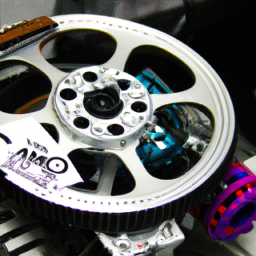Imagine the excitement of holding a tiny remote control in your hand and effortlessly guiding a miniature car through twists and turns. Have you ever wondered how this magic happens? In this article, we will explore the fascinating world of remote control cars and delve into their working principle. From the intricate circuitry to the wireless communication, get ready to uncover the secrets behind these miniature marvels.
Remote Control Car Working Principle
Overview of Remote Control Cars
Remote control cars, also known as radio-controlled cars or RC cars, are vehicles that can be controlled from a distance using a remote control. They are popular among hobbyists of all ages and offer an exciting way to experience the thrill of driving without actually being behind the wheel. Remote control cars are available in various types and sizes, ranging from simple toys to high-performance models used in competitive racing.
Components of a Remote Control Car
A remote control car consists of several key components that work together to enable its functionality. These components include the transmitter and receiver, power source, motor and drive system, steering mechanism, remote control frequency, wireless communication, and remote control signals.
Transmitter and Receiver
The transmitter is the handheld device used to control the remote control car. It sends signals to the car’s receiver, instructing it to execute specific actions such as accelerating, decelerating, turning, or stopping. The transmitter communicates with the receiver using radio waves of a specific frequency. The receiver, which is typically located inside the car, receives the signals sent by the transmitter and converts them into electrical commands that control the car’s movement.
Power Source
Like any other motorized device, remote control cars require a power source to operate. The power source can vary depending on the type and size of the car. Some smaller RC cars are powered by batteries, while larger and more powerful models may use rechargeable batteries or gasoline engines. The power source provides the necessary energy to activate the motor and drive system, allowing the car to move.
Motor and Drive System
The motor and drive system are responsible for propelling the remote control car forward or backward. In most RC cars, an electric motor is used, which is powered by the energy supplied by the power source. The motor converts electrical energy into mechanical energy, which is then transmitted to the wheels through the drive system. The drive system consists of various gears and mechanisms that transfer the rotational motion of the motor to the wheels, enabling the car to move in the desired direction.
Steering Mechanism
To control the direction of the remote control car, a steering mechanism is employed. This mechanism allows the driver to turn the front wheels, thereby changing the car’s course. In most RC cars, the steering mechanism is controlled by a servo motor. The servo motor receives signals from the receiver and adjusts the position of the front wheels accordingly. By manipulating the steering control on the transmitter, the driver can guide the car to go left or right.
Remote Control Frequency
The remote control frequency is the specific radio frequency at which the transmitter and receiver of the remote control car communicate. It is crucial for the proper functioning of the remote control system, as it ensures that the signals from the transmitter reach the receiver without interference. Different remote control cars operate on different frequencies, allowing multiple cars to be used simultaneously without interfering with each other’s signals.
Wireless Communication
Wireless communication is the method through which the transmitter and receiver of a remote control car exchange signals. The transmitter emits radio waves, which travel through the air and are received by the car’s receiver. This wireless communication enables real-time control of the remote control car, allowing the driver to operate it from a distance.
Remote Control Signals
The signals sent by the transmitter to the receiver are coded instructions that determine the actions the remote control car will perform. These signals can be simple commands such as forward, backward, left, or right, or they can be more complex instructions that control additional features like speed, lights, or sound effects. The receiver interprets these signals and translates them into corresponding actions, enabling the car to respond accordingly.
Operation of a Remote Control Car
Operating a remote control car involves using the transmitter to send signals to the car’s receiver. The driver holds the transmitter and manipulates the controls, such as the throttle and steering wheel. By pushing the throttle forward, the car accelerates, while pulling it backward causes it to decelerate or reverse. Turning the steering wheel left or right controls the car’s direction. The signals from the transmitter are received by the car’s receiver, which translates them into motor and steering commands, resulting in the desired movements of the remote control car.
In conclusion, remote control cars function based on the transmission of signals from a handheld transmitter to a receiver in the car. These signals control the motor, drive system, and steering mechanism, allowing the car to move and change direction. Understanding the working principle of remote control cars ensures a fun and enjoyable driving experience while exploring the world of RC car hobbying.

